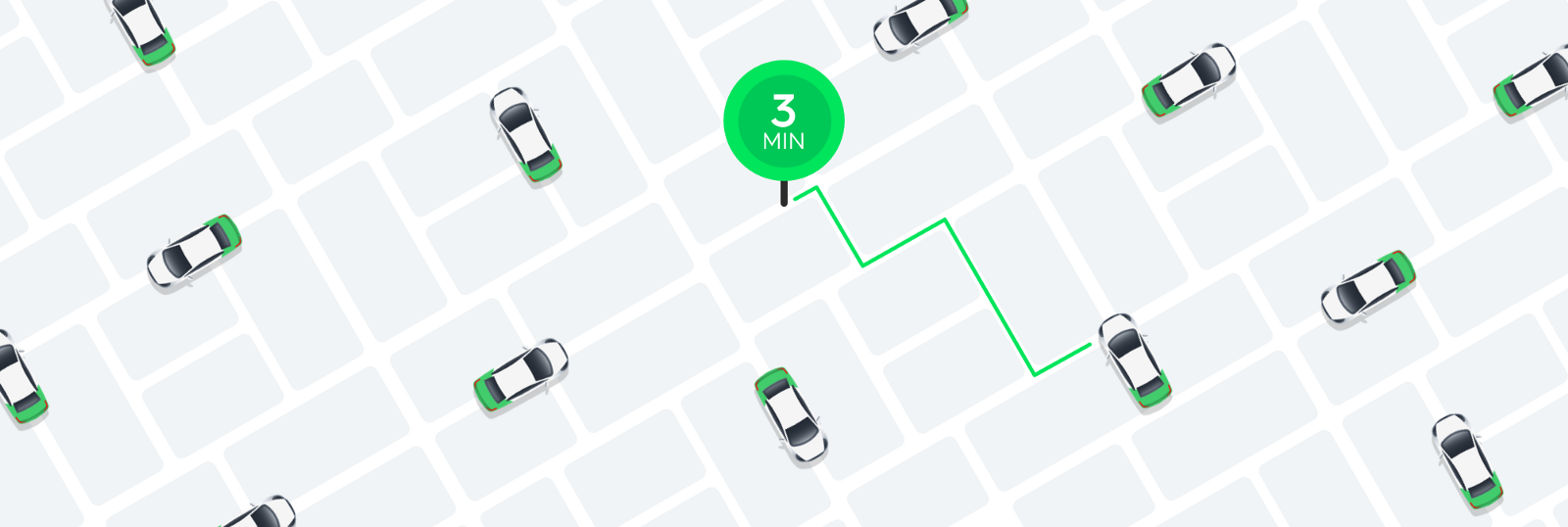Developing Machine Intelligence for Urban Mobility
Andre Karpištšenko, Data Science Lead at Taxify

In Taxify’s Engineering and Data Science teams, we aim to keep the user experience smooth and simple for both our riders and drivers. Our goal is to provide convenient and reasonably priced rides for anyone in need within 3 minutes in all the 40+ cities we operate in.
At first it doesn’t sound that hard, but behind the scenes there are a lot of interesting problems and challenges we solve on a daily basis. In this post, we are going to give you a brief overview of what Taxify’s Engineering and Data Science teams are working on.
Algorithms for Mobility Services
One of the first things we have to solve is having the right number of drivers available at the right place at the right time. 24 hours a day, 7 days a week.
This is a highly multidimensional optimization problem and getting it right has immediate real-world consequences — riders either get a car in minutes or they have to find an alternative. To deliver a reliable service we’re using a variety of methods like predicting order locations before they happen, balancing supply and demand with dynamic pricing and developing a smart dispatching engine to maximise global ride completions.
Another critical area is improving efficiency and reducing arrival times by helping riders find optimal pickup locations based on millions of previously completed trips in the city and then generating the best routes for drivers to reach those points based on a dynamic, weighted city graph.
People and Machines Working Together
As customer demand is heavily impacted by irregular events like concerts, holidays and weather, it means our engineers and data scientists are solving problems together with our local operational teams to ensure reliability on a daily basis.
This will become even more critical with the onset of self-driving cars, as human drivers have significantly more context about local events and can adapt their driving times without relying on our systems to have perfect data.
This is just one of the examples of why we believe driverless ride-sharing will go hand in hand with cars driven by people for years to come.
Scaling a Fast-growing System
Coming back to the present, as we serve more than 10 million riders and 500 thousand drivers, we are investing heavily in infrastructure like release automation to keep our speed of launching new features within days not months, while maintaining stability for everyone who relies on Taxify.
A great example is our growth analytics and decision-making engine, that deals with optimising rider and driver funnels using communications and discount campaigns (e.g. “Get 5€ off your next 3 rides!”). The system relies on machine learning based on historical data for optimal timing and targeting, but it needs to constantly adapt to our newly launched cities and products, offerings from competitors and also local events to stay relevant.
In a different area, the adoption of in-app payments like credit cards and carrier billing is accelerating and fraudsters are quickly learning to abuse any opportunities platforms leave open. We now update our anti-fraud systems and manual review processes daily to stop thousands of fraudulent rides from happening while minimising the impact on legitimate customers.
Another big initiative we’re starting to work on is using our scale to improve safety with real-time feedback to drivers. So far we have relied on rider ratings, but now it is possible to use mobile sensor data to reduce speeding, sharp turns, avoid potholes and even offer discounted insurance to the safest drivers. Stay tuned for more updates on this in the next months.
Frontier R&D
As you can see, there is a broad range of topics our engineers and data scientists have to stay on top of. Given the relatively small team, we are always looking for smart ways to automate what we do while continuously pushing the baseline. For example, we use automated machine learning on a daily basis to find the best methods for a particular dataset and business case.
For the Data Science team, this also means staying up to date with the current state of art of algorithms, such as reinforcement learning, neuroevolution and sequence modeling. Overall, the goal is to create predictive models and automated decisions that enable us to adapt to changes in city transportation. In close collaboration with engineers, our data scientist have to scale the system to close to a billion events per day to sustain our high growth pace from Mexico to Australia, from Northern Europe to the southern tips of Africa.
Transportation is going through the biggest change since cars first arrived more than a hundred years ago and different companies are aiming to solve a different part of the puzzle. Taxify’s goal is to be the best optimizer of city transportation, building a software layer connecting passengers to all forms of vehicles — from cars to motorbikes to whatever new is on the horizon. That means partnering with startups, large technology companies and leading automotive manufacturers in the world.
If you want to join the ride of making millions of people’s lives better by increasing their productivity, saving costs and reducing carbon emissions through ride-sharing, connect with our team. We are looking for talent across the globe.
About the Author
André Karpištšenko leads Taxify’s data science efforts in creating machine intelligence for urban mobility in more than 25 countries. He is building teams of PhDs, scientists and engineers with diverse backgrounds ranging from theoretical computer science to quantitative economics.
Previously, he co-founded two companies, including Planet OS, a data infrastructure and intelligence provider in renewable energy. He also built three teams at Skype, incl. the founding of Data Analytics Research at Skype Labs.

